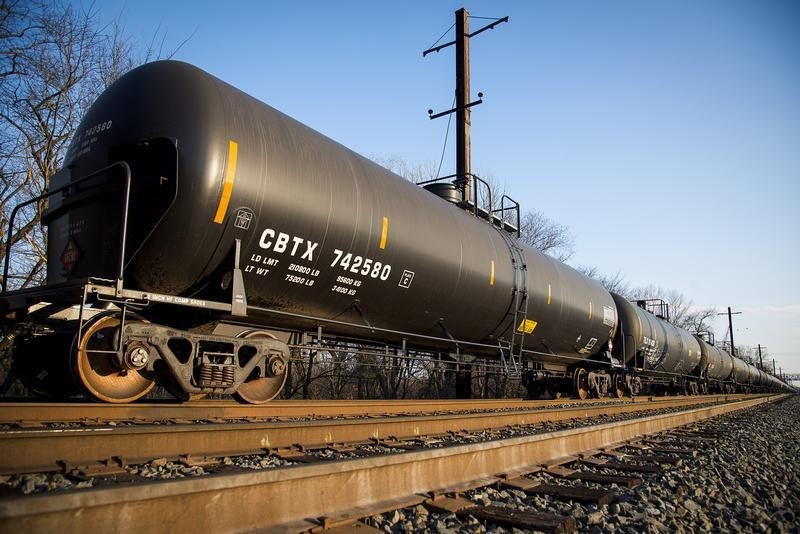5 big analyst AI moves: Nvidia guidance warning; Snowflake, Palo Alto upgraded
* U.S. crude stockpiles rise as production hits record high
-EIA
* OPEC sees smaller 2020 oil surplus ahead of policy meeting
* China's October industrial output misses forecasts
(New throughout, updates prices, market activity and comments)
By Laila Kearney
NEW YORK, Nov 14 (Reuters) - Oil prices eased on Thursday as
U.S. crude futures were pressured by a build in domestic
inventories and record production, but losses were limited by
forecasts from the Organization of the Petroleum Exporting
Countries for a lower-than-expected oil surplus.
Brent crude futures LCOc1 settled at $62.28 a barrel, down
9 cents, while West Texas Intermediate crude CLc1 settled at
$56.77 a barrel, down 35 cents.
U.S. crude stockpiles grew last week by 2.2 million barrels,
the Energy Information Administration said, exceeding the 1.649
million-barrel rise forecast by analysts in a Reuters poll.
Production hit a record high. EIA/S
"It's really about the inventory report today," said Phil
Flynn, an analyst at Price Futures Group in Chicago. "The build
in crude oil supply was a bit of a disappointment."
Crude production rose by 200,000 barrels per day (bpd) to a
weekly record of 12.8 million bpd, the EIA said in its weekly
report delayed a day by Monday's U.S. Veterans Day holiday.
"While this increased production could translate to a
slightly larger crude surplus than would otherwise be the case
in the coming weeks, it is not a game changer and price impact
could easily be dampened if oil drilling rig counts continue to
trend lower," said Jim Ritterbusch, president of Ritterbusch and
Associates.
The U.S. rig count has fallen for the past three consecutive
weeks. The latest figures will be released on
Friday at 1 p.m. EST. RIG/U
Earlier, the market rose about 1% after OPEC pointed to a
smaller global crude surplus next year although it still expects
its demand to drop as rivals pump more. OPEC Secretary General Mohammad Barkindo also said on
Wednesday that there would likely be downward revisions of
supply going into 2020, especially from U.S. shale. Barkindo said it was too early to say whether further output
cuts would be needed.
Falling demand could encourage the exporter group and
partners like Russia to maintain supply curbs at a meeting on
Dec. 5-6.
"The countdown to the meeting of the OPEC countries has
started, and the question of whether the group and its allies
will further cut supplies is top of mind," said Norbert Rucker,
head of economics at Swiss bank Julius Baer.
"Current market conditions are testing the petro-nations'
patience and cohesion ... Any major change in policy would come
as a surprise."
Prices were also capped by mixed signs for oil demand in
China, the world's biggest crude importer. Industrial output
rose more slowly than expected in October, but oil refinery
throughput hit the second-highest level on record.
